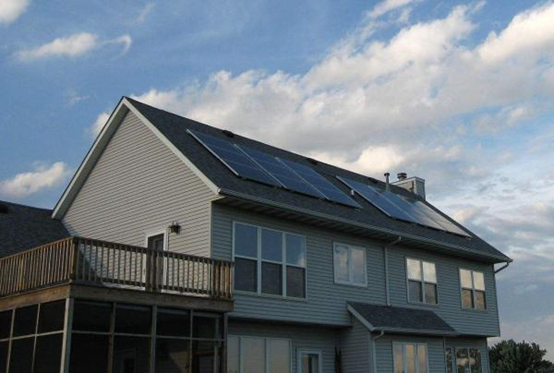Introduction: Many people think that the summer sun is hot and the photovoltaic power plant should generate high electricity. However, if the temperature is too high, the air humidity is too high, plus the summer's frequent heavy rainfall, thunderstorms, etc. Bad weather often brings negative effects and even safety hazards to photovoltaic power plants.
Many people think that the summer sun is hot and the photovoltaic power plant should generate high electricity. However, if the temperature is too high and the air humidity is too high, it will be accompanied by heavy rain, thunderstorms and other severe weather. , It will often bring negative effects and even potential safety hazards to photovoltaic power plants. So, what about our PV modules?
 Keep Ventilated
Keep Ventilated
Photovoltaic modules, inverters, and distribution boxes must be ventilated and air-flown. In the initial design, the arrangement of the PV power plant components was unreasonably arranged, causing the components and components to block each other, and at the same time affecting the cooling and ventilation, resulting in low power generation, which must be avoided.
Clean Up in Time
While maintaining ventilation, the cleanup work of the power station and surrounding environment should also be done so as not to affect the normal operation of the power station system. If there is accumulation of debris, clean up in time.
After the photovoltaic power station is built, operation and maintenance should not be too sloppy, especially during the summer, it is best to conduct regular inspections. Nowadays, not only the era of solar power is booming, but the era of “photovoltaic + energy storage” has come. According to the energy storage market monitoring report of the research company GTM in the fourth quarter of 2017, the energy storage market has become the fastest growing solar energy market in the United States. part.
Finally, to remind everyone in the inspection of the PV module, the thermal image is usually used to lock the heat part, or use the broken wire detector to check the breakage part and the failure of the bypass diode. If the power generation is significantly reduced or other abnormalities occur after components are removed, the user should promptly notify the operation and maintenance personnel to check the photovoltaic system. If necessary, they can be sent back to the original factory for testing so that the damaged photovoltaic components can be promptly replaced.
